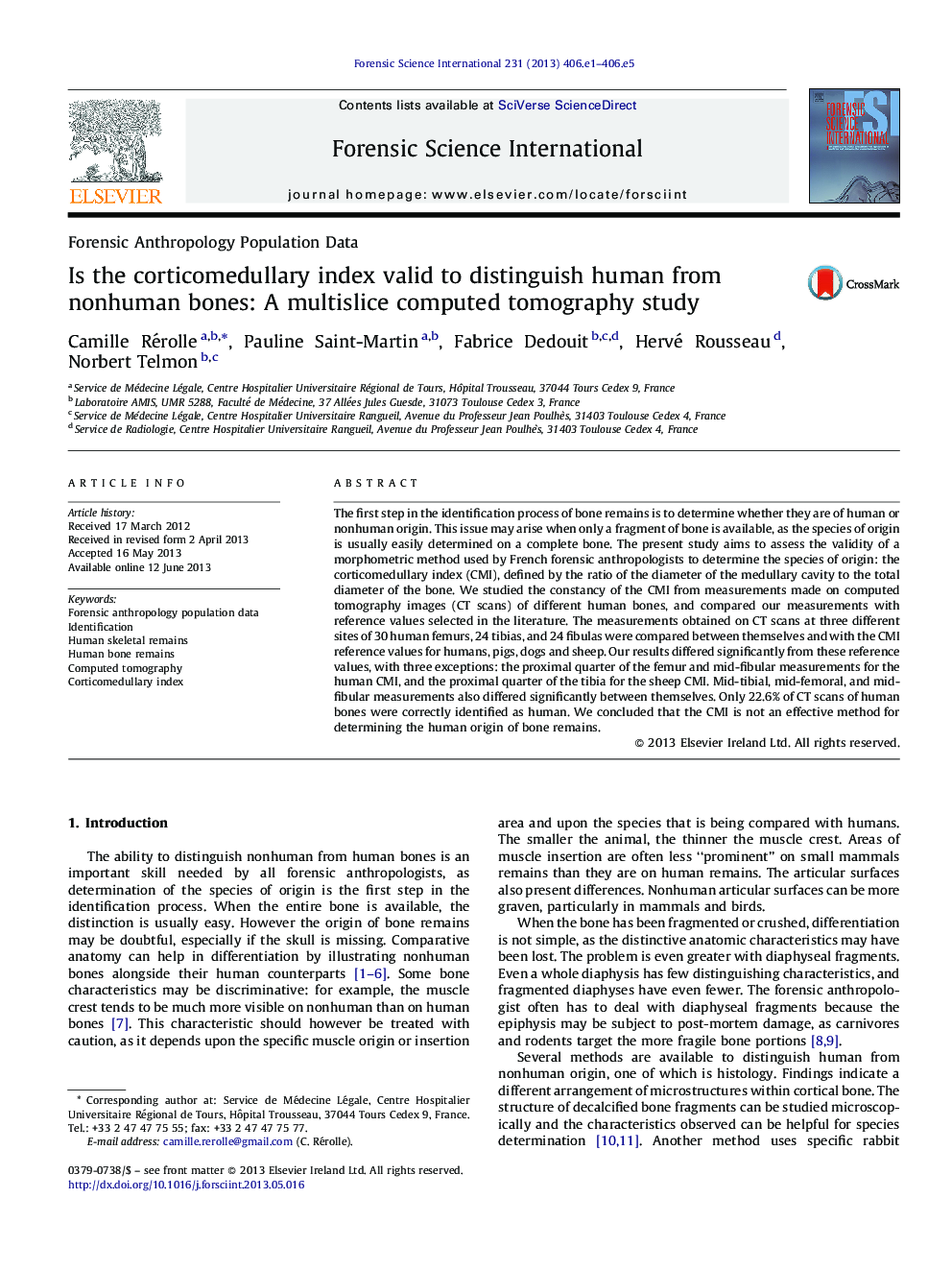| Article ID | Journal | Published Year | Pages | File Type |
|---|---|---|---|---|
| 95868 | Forensic Science International | 2013 | 5 Pages |
Abstract
The first step in the identification process of bone remains is to determine whether they are of human or nonhuman origin. This issue may arise when only a fragment of bone is available, as the species of origin is usually easily determined on a complete bone. The present study aims to assess the validity of a morphometric method used by French forensic anthropologists to determine the species of origin: the corticomedullary index (CMI), defined by the ratio of the diameter of the medullary cavity to the total diameter of the bone. We studied the constancy of the CMI from measurements made on computed tomography images (CT scans) of different human bones, and compared our measurements with reference values selected in the literature. The measurements obtained on CT scans at three different sites of 30 human femurs, 24 tibias, and 24 fibulas were compared between themselves and with the CMI reference values for humans, pigs, dogs and sheep. Our results differed significantly from these reference values, with three exceptions: the proximal quarter of the femur and mid-fibular measurements for the human CMI, and the proximal quarter of the tibia for the sheep CMI. Mid-tibial, mid-femoral, and mid-fibular measurements also differed significantly between themselves. Only 22.6% of CT scans of human bones were correctly identified as human. We concluded that the CMI is not an effective method for determining the human origin of bone remains.
Keywords
Related Topics
Physical Sciences and Engineering
Chemistry
Analytical Chemistry
Authors
Camille Rérolle, Pauline Saint-Martin, Fabrice Dedouit, Hervé Rousseau, Norbert Telmon,
